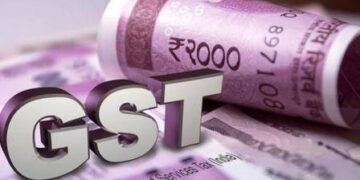Nagaland appears to be heading for another government without the Opposition as almost all political parties in Nagaland expressed their willingness to support the NDPP-BJP alliance government. The ruling NDPP, along with its ally BJP retained power in Nagaland for a second straight term by winning 37 seats together in the 60-member Assembly. Earlier, in April last year, an Opposition-less United Democratic Alliance (UDA) government was formed to expedite the Naga political dialogue with the Central government. In Nagaland, no party was keen to remain in opposition, and each of them wanted to remain with the government for various reasons, including the development of all areas.
Till now, only the Lok Janshakti Party (Ram Vilas Paswan) in writing has submitted a letter supporting the NDPP-BJP alliance government. No other party has so far provided any letter of support to the alliance government even as they have verbally expressed their willingness to support the government. Leaders of NCP, NPP and NPF have expressed their willingness to support the NDPP-BJP coalition government. But the central leaders of the BJP and the top leaders of NDPP along with Chief Minister Neiphiu Rio would decide whether the government would take any support from all other parties after they submit their letters of support.
In the February 27 elections, the results of which were declared on March 2, Nationalist Congress Party (NCP) secured six seats; National People’s Party led by Meghalaya Chief Minister Conrad K. Sangma managed five seats; Lok Janshakti Party (Ram Vilas Paswan), Naga People’s Front and Republican Party of India (Ramdas Athawale) bagged two seats each; Janata Dal (United) bagged one seat; while four seats were won by Independent candidates. The Congress, which governed Nagaland for many years till 2003, had contested 23 seats but drew a blank once again. The grand old party had no legislator in the previous Assembly.
The NPF had emerged as the single largest party in the 2018 elections, but the NDPP and the BJP, with the support of the independent MLAs, managed to form a coalition government. In April last year, 21 of the 26 NPF legislators led by former Chief Minister Taditui Rangkau Zeliang had “merged” themselves with the NDPP and formed the opposition-less all party UDA government to expedite the Naga political dialogue with the Central government. Almost all political parties in Nagaland are maintaining towards bringing a final settlement to the decades old Naga issue and urged for unity amongst all sections of the people, especially all the Naga groups.
The Central government has been separately holding the peace talks with the NSCN-IM and eight other outfits which came together a few years ago under the banner of ‘Naga National Political Groups’ (NNPGs). The NSCN-IM and other outfits entered into a ceasefire agreement with the government of India in 1997 and in the subsequent years and held political dialogue since then. The NSCN-IM, the dominant Naga group, since August 1997, held around 80 rounds of negotiations with the Centre. But the talks are hanging in a limbo as the NSCN-IM has been demanding a separate flag and Constitution which the Central government had rejected.

























